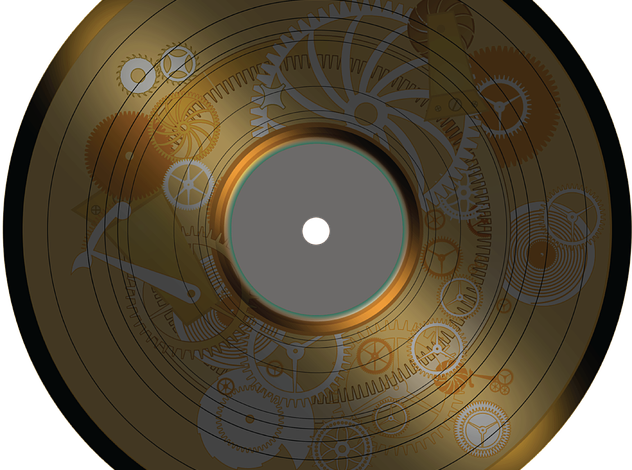The Role of AI in Wildlife Conservation Efforts

AI, or Artificial Intelligence, has emerged as a powerful tool in various fields, and wildlife conservation is no exception. Picture this: a world where AI aids in the protection and preservation of our precious animal species. With its ability to process vast amounts of data, identify patterns, and make informed decisions, AI has revolutionized wildlife conservation efforts.
One of the key roles AI plays in this realm is monitoring and tracking endangered species. Traditionally, researchers would spend countless hours scouring through camera trap images or manually tracking animals. Now, with AI-powered algorithms, the process has become more efficient and accurate. These algorithms can analyze images and videos, automatically detect and identify species, and even estimate population sizes. This saves time and resources, allowing conservationists to focus more on implementing effective strategies.
But AI doesn’t stop at identification; it goes beyond that. Machine learning algorithms can predict wildlife behavior based on gathered data, enabling researchers to anticipate movements, migration patterns, and even potential threats. By understanding animal behavior, conservationists can develop targeted conservation plans and establish protected areas in crucial habitats.
Moreover, AI assists in combating illegal wildlife trade, which poses a severe threat to many species. Through data analysis and pattern recognition, AI algorithms can identify suspicious online activities, such as the sale of endangered animal products. By flagging these activities, authorities can take prompt action, leading to the prevention of further exploitation and helping protect vulnerable species.
Imagine AI as a guardian, constantly watching over wildlife. It can monitor the soundscape of forests, detecting unusual noises that might signify illegal logging or poaching activities. This real-time information enables rapid response teams to intervene swiftly, safeguarding wildlife from harm.

In summary, AI has become an indispensable ally in wildlife conservation efforts. From species monitoring and behavior prediction to combating illegal wildlife trade and providing real-time protection, AI contributes significantly to the preservation of our natural heritage. By harnessing the power of technology, we can foster a world where humans and wildlife coexist harmoniously, ensuring a sustainable future for generations to come.
AI Revolutionizes Wildlife Conservation: How Artificial Intelligence is Transforming Efforts to Protect Endangered Species

Artificial intelligence has ushered in a new era of wildlife conservation, revolutionizing and transforming efforts to protect endangered species. Gone are the days when conservationists solely relied on traditional methods. With AI at their disposal, they now possess a powerful tool that enhances their ability to understand and safeguard our planet’s most vulnerable creatures.
One way AI is making a profound impact is through its ability to analyze vast amounts of data. Conservation organizations collect an extensive range of information, such as animal population numbers, habitat conditions, and environmental factors. Before AI, processing and comprehending this data was a time-consuming task. But now, with the help of machine learning algorithms, AI can swiftly sort through vast datasets, extracting valuable insights that were once hidden within this sea of information.
Moreover, AI-enabled drones have become invaluable allies in the fight against poaching. Equipped with advanced cameras and sensors, these unmanned aerial vehicles can monitor large areas and detect suspicious activities in real-time. By employing AI algorithms, they can differentiate between humans and animals, recognize potential threats, and alert authorities promptly. This proactive approach significantly bolsters anti-poaching efforts, allowing for swift responses and increased protection for endangered species.
AI-driven image recognition technology is yet another game-changer in wildlife conservation. Researchers can now train AI models to identify specific species from photographs or videos, reducing the time and effort required for manual identification. This breakthrough technology enables faster species monitoring, aiding in population assessments and helping track the movement patterns of endangered animals more accurately. It also facilitates the identification of illegal wildlife trade, allowing authorities to crack down on the trafficking of protected species more effectively.
Artificial intelligence has brought about a paradigm shift in wildlife conservation. From analyzing big data to leveraging drones and image recognition, AI has transformed the way we protect endangered species. Through its capabilities, conservationists can make informed decisions, detect threats more efficiently, and implement measures that ensure the survival of our planet’s precious wildlife. With AI as a powerful ally, we can hope for a brighter future where endangered species thrive and coexist harmoniously with humanity.
Saving Lives with Smart Algorithms: The Powerful Impact of AI in Tracking and Rescuing Wildlife
Introduction:
Imagine a world where technology comes to the aid of our wildlife, safeguarding their lives and preserving biodiversity. Thanks to the remarkable advancements in Artificial Intelligence (AI), this vision is becoming a reality. Today, we delve into the captivating realm of AI-powered algorithms that are revolutionizing the way we track and rescue wildlife, ensuring a brighter future for countless species.
The Unseen Heroes:
Hidden in forests, oceans, and remote landscapes, countless animals go about their lives beyond our reach. This is where AI steps in as an unseen hero, assisting conservationists and researchers in their vital mission. By pairing sophisticated algorithms with high-resolution imagery and sensor data, AI enables us to monitor and protect wildlife like never before.
Tracking Made Efficient:
Gone are the days of laborious manual tracking methods. With AI, tracking elusive creatures has become exponentially more efficient. By analyzing patterns, behaviors, and habitat preferences, AI algorithms can identify individual animals, track their movements, and even predict their future behavior. This invaluable assistance not only saves time but also enables researchers to gather critical insights into animal populations and their ecological needs.


From Poaching Prevention to Habitat Preservation:
One of the most significant threats to wildlife is poaching. AI offers a powerful weapon in the fight against this illegal activity. By utilizing image recognition algorithms, AI systems can scan vast amounts of camera trap images or aerial surveillance footage to detect potential poachers in real-time. This proactive approach allows authorities to respond swiftly, ultimately deterring poaching activities and protecting endangered species.
Moreover, AI contributes to habitat preservation by monitoring environmental factors such as temperature, precipitation, and vegetation cover. By collecting and analyzing this data, conservationists can gain a comprehensive understanding of how climate change affects wildlife habitats, enabling them to implement effective strategies for long-term preservation.
Rescue Missions Redefined:
In situations where wildlife encounters danger or requires urgent assistance, AI proves to be a lifeline. Drones equipped with AI-powered algorithms can swiftly locate distressed animals in vast and inaccessible areas, making rescue missions more targeted and efficient. AI algorithms can also aid in identifying injured or sick animals by analyzing their behavior, vocalizations, or physiological data. Prompt identification and intervention increase the chances of successful rehabilitation and release back into the wild.
Conclusion:
The power of AI in tracking and rescuing wildlife is awe-inspiring. From enhancing tracking capabilities to combating poaching and revolutionizing rescue missions, smart algorithms are transforming conservation efforts worldwide. As we continue to harness the potential of AI, we have a unique opportunity to safeguard our planet’s most vulnerable inhabitants and ensure a harmonious coexistence between humans and wildlife for generations to come.
Unleashing the Power of Machine Learning: AI’s Role in Identifying and Preventing Wildlife Trafficking
Have you ever wondered how we can protect our precious wildlife from the devastating effects of trafficking? It turns out that artificial intelligence (AI) and machine learning hold the key to combating this global issue. By harnessing the power of AI, we can effectively identify and prevent wildlife trafficking, ensuring the preservation of our planet’s natural treasures.
Wildlife trafficking has reached alarming levels in recent years, posing a significant threat to endangered species. This illegal trade involves the capture, transport, and sale of animals and their body parts, driven by a lucrative black market. However, with the advancement of technology, we now have a powerful ally in the fight against this illicit practice.
Machine learning algorithms can be trained to recognize patterns and anomalies in large datasets, making them invaluable tools for identifying instances of wildlife trafficking. These algorithms analyze vast amounts of data, such as social media posts, online marketplaces, and shipping records, to detect suspicious activities and flag potential cases of trafficking.
Imagine an AI system tirelessly scanning through thousands of online advertisements, recognizing keywords associated with illicit wildlife trade, and alerting authorities to take action. By automating this process, we can expedite the identification of trafficking hotspots and apprehend those involved more efficiently.
But the power of machine learning doesn’t stop there. AI can also assist in predicting future trafficking trends and designing proactive strategies to prevent illegal activities. By analyzing historical data and monitoring changes in environmental and geopolitical factors, AI systems can provide valuable insights into the movements and behaviors of traffickers, enabling law enforcement agencies to stay one step ahead.
Think of it as a virtual detective, constantly gathering and analyzing information to reveal hidden connections and expose criminal networks. With this intelligence, we can implement targeted interventions, strengthen border controls, and collaborate with international organizations to dismantle trafficking operations at their core.
The utilization of machine learning and AI in combating wildlife trafficking is a groundbreaking approach that promises significant impact. By leveraging the power of these technologies, we can identify and prevent illegal activities more effectively, safeguard endangered species, and protect our planet’s biodiversity. It’s time to unleash the full potential of AI and join forces in the fight against wildlife trafficking. Together, we can create a future where nature thrives and all living beings coexist harmoniously.
From Pixels to Preservation: How AI Helps Researchers Analyze Satellite Imagery to Safeguard Natural Habitats
Have you ever wondered how researchers are able to monitor and protect our precious natural habitats? It’s a challenging task, but thanks to the incredible advancements in artificial intelligence (AI), they now have a powerful tool at their disposal. By harnessing the potential of AI and satellite imagery analysis, scientists are able to gain valuable insights into the state of our environment and take proactive measures to safeguard it.
Satellite imagery provides a bird’s-eye view of our planet, capturing vast amounts of data in the form of pixels. These pixels represent various features on Earth’s surface, including forests, rivers, and wildlife habitats. However, manually analyzing this massive amount of data would be an incredibly time-consuming and daunting task. That’s where AI comes in.
Using sophisticated machine learning algorithms, AI can quickly process and analyze satellite imagery with remarkable precision. By training AI models on vast datasets of labeled images, researchers teach the system to recognize and classify different elements within the imagery. This enables them to identify and monitor changes in natural habitats, such as deforestation, urbanization, or the expansion of human activities.
But how does AI help in safeguarding these habitats? Well, once the AI system has learned to identify specific objects or patterns, it can autonomously analyze new satellite imagery and detect any changes or anomalies. For instance, if there is a sudden decrease in the green coverage of a forest, the AI model can raise an alert, indicating the possibility of illegal logging or other harmful activities.
In addition to change detection, AI-powered algorithms can also extract valuable information from satellite imagery. For example, by analyzing the color spectrum reflected by vegetation, researchers can estimate the health and density of forests. This information is crucial for assessing the impact of climate change, identifying regions at risk, and implementing targeted conservation strategies.
The integration of AI with satellite imagery analysis has revolutionized the way researchers approach environmental monitoring and conservation. It allows them to gather valuable data on a large scale, detect environmental changes in real-time, and take proactive measures to protect natural habitats from further degradation.



